Isocoma acradenia, Alkali Goldenbush
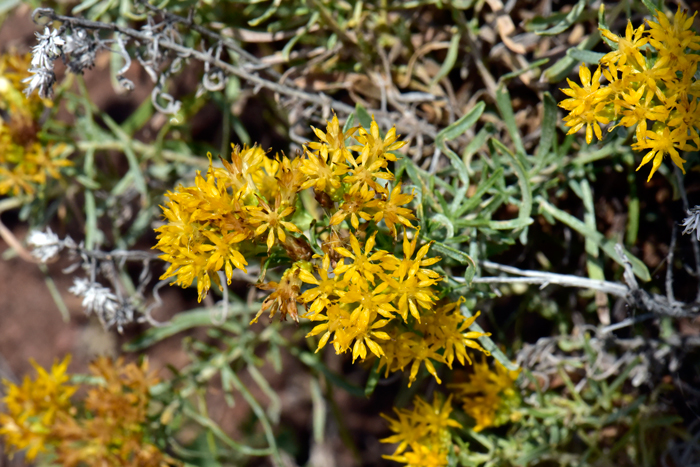
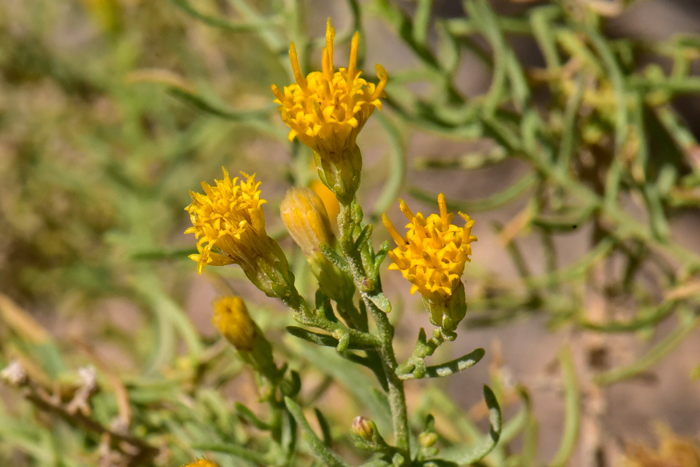
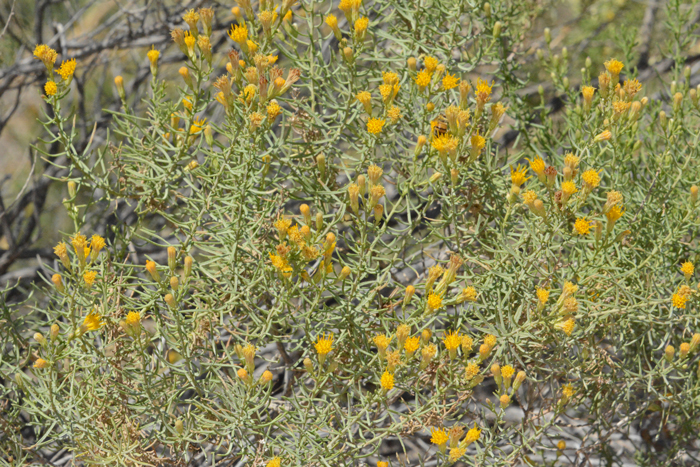
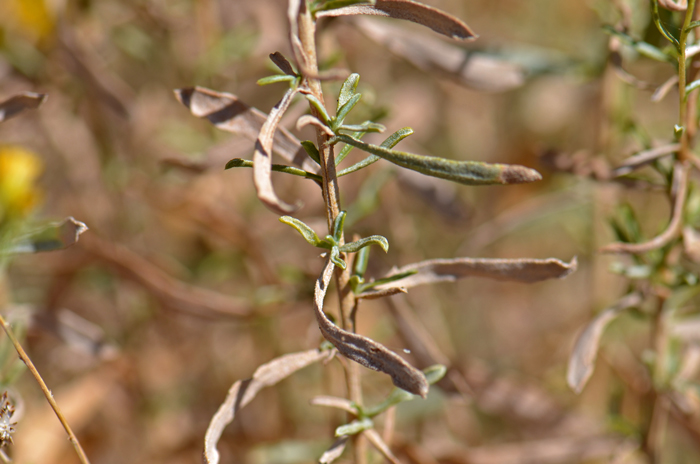
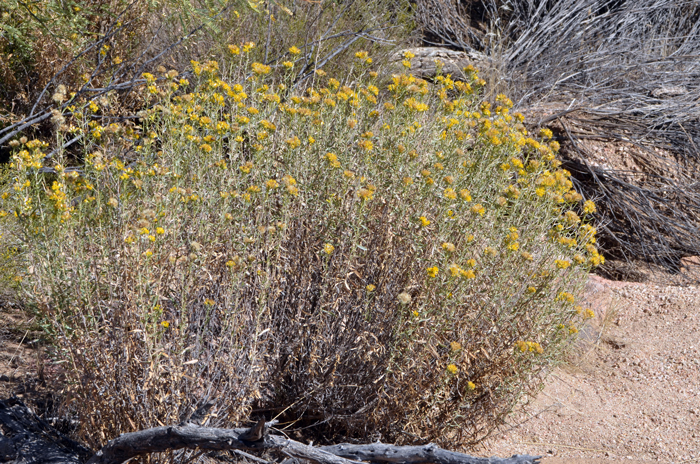
Scientific Name: Isocoma acradenia
Common Name: Alkali Goldenbush
Also called: Alkali Jimmyweed, Desert Isocoma
Family: Asteraceae, Sunflower Family
Synonyms: (Haplopappus acradenius, Aplopappus acradenius)
Status: Native
Duration: Perennial
Size: Up to 4 feet (1.3 m) 40 inches (1 m)
Growth Form: Shrub or subshrub; rounded, bushy, plants upright or erect, multiple upright shiny stems; minute short hairs; plants sticky from resin; older stems becoming yellowish-tan or yellowish-gray.
Leaves: Green to light greenish-gray; older leaves becoming light gray or tan; leaves arranged alternately along stem; leaves simple, mostly narrowly linear; leaves with small glands.
Flower Color: Yellow; clusters of 4 or 5 flower heads; floral heads with disk florets only; fruit is a cypsela with coarse permanent pappus
Flowering Season: June through October or much of the year with good summer and winter rainfall.
Elevation: Up to 4,000 feet (1,219 m)
Habitat Preferences: Various habitats, lower and upper deserts, Creosote Bush communities, saline or alkaline and gypsum soils, sandy, gravelly areas.
Recorded Range: In the United States Isocoma acradenia is found only in AZ, CA, NV and UT; mostly in AZ, CA and NV. It is also Native to northwest Mexico and Baja California.
North America & US County Distribution Map for Isocoma acradenia.
North America species range map for Alkali Goldenbush, Isocoma acradenia:
North American range map courtesy of Virginia Tech, Dept. of Forest Resources & Environmental Conservation
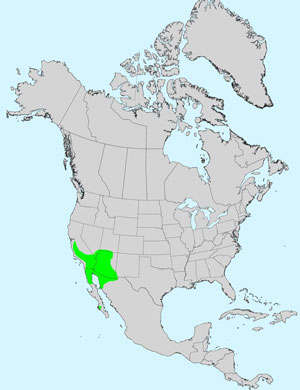
U.S. Weed Information: Unknown
Invasive/Noxious Weed Information: Unknown
Threatened/Endangered Information: Unknown
Wetland Indicator: In North America Isocoma acradenia has the following wetland designations:
FACU = Facultative Upland, usually occur in non-wetlands, but may occur in wetlands Genus Information: In North America there are 11 species and 11 accepted taxa overall for Isocoma. Worldwide, The Plant List includes 15 accepted species names and a further 44 scientific names of infraspecific rank for Isocoma.
The genus Isocoma was published by Thomas Nuttall, (1786-1859), in 1840.
In the Southwestern United States: Arizona has 5 species of Isocoma, California, Utah and Texas each have 3 species, Nevada has 1 species and New Mexico has 4 species. Data approximate and subject to revision.
There are 3 varieties in Isocoma acradenia;
Isocoma acradenia var. acradenia, Alkali Goldenbush (AZ, CA, NV)
Isocoma acradenia var. bracteosa, Alkali Goldenbush (CA)
Isocoma acradenia var. eremophila, Alkali Goldenbush (AZ, CA, NV, UT)
Comments: Alkali Goldenbush, a Mojave Desert species, is common throughout its range. It is one of several yellow fall blooming subshrubs in the state. Formerly included in the large genus Haplopappus, Alkali Goldenbush was moved to the genus Isocoma along with several other genera.
It is similar in appearance to the closely related Burroweed, Isocoma tenuisecta which has deeply divided ( pinnately) leaves.
In Southwest Desert Flora, also see Burroweed, Isocoma tenuisecta, Southern Goldenbush, Isocoma pluriflora and Rusby's Goldenbush, Isocoma rusbyi.
The genus Isocoma was published by Thomas Nuttall, (1786-1859), in 1840.
The species epithet “acradenia” (acrade'nia:) from the Greek for “pointed-glanded,” each of the involucre bracts having a large gland at its tip.

